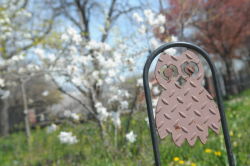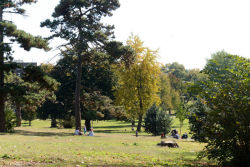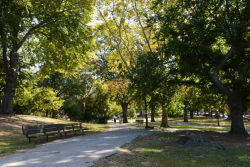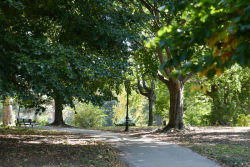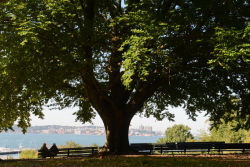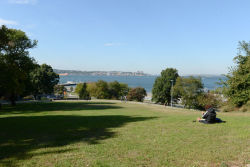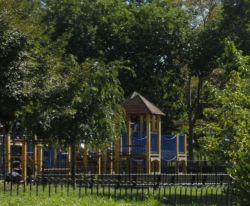Owl's Head Park
Owl’s Head Park
What was here before?
The Canarsie lived in and around present-day Owl’s Head Park, fishing in the Hudson River and New York Harbor, collecting oysters on the shore, and farming the fertile outwash plain. The first Europeans to settle this land were of Dutch descent. They established Yellow Hook, an agricultural community named for the yellow clay that leached from the shore into the water. Among these farmers who purchased land that is now part of the park was Swaen Janse, a formerly enslaved person.
Concerned that Yellow Hook reminded people of the yellow fever epidemic, in 1853 a group of citizens renamed the community Bay Ridge for the prominent geological features of the area. Owl’s Head Park is located on a terminal moraine that extends from New Jersey to the end of Long Island. A moraine marks the place where the 10,000-year-old Wisconsin glacier deposited boulders, rocks, soil, and debris. The rich soil provides nutrients to the venerable trees that can be found on the property which include pines, locusts, oaks, maples, corks, beeches, and one S-shaped tulip poplar that defies gravity. They are a great backdrop to the magnificent vistas of the narrows and New York Harbor.
A native of Brooklyn, Henry C. Murphy (1810-1882) built his estate along the glacial ridge where the park is today. The son of Irish immigrants, Murphy’s political career included terms as Mayor of Brooklyn, U.S. Representative, U.S. Minister to the Hague, and New York State Senator. As Senator, Murphy drafted the bill which authorized the construction of the Brooklyn Bridge, which he signed at his mansion in 1866. He also founded The Brooklyn Eagle and was one of its first editors. Considered a founding father of Brooklyn, Murphy translated colonial sources and documented Brooklyn’s Dutch heritage. Senator Street, which begins at the park, was named in his honor.
The Murphy estate was purchased in 1866 by Eliphalet W. Bliss (1836-1903), a wealthy manufacturer who made his fortune introducing and implementing techniques of mass production to the pressed metal industry. Bliss refurbished the mansion and built a horse stable and observatory tower from which one could view the bay, Staten Island, and the Watchung Mountains of New Jersey
How did this site become a park?
In his will, Bliss offered his million-dollar property to New York City for $835,000 with the stipulation that it would be used solely for parkland. In 1928, the land was designated a park upon acquisition of the remaining corners of the site. Although quite impressive at the time, Owl’s Head Park fell into neglect, and the mansion, stables, and tower were demolished by 1940. In 2004, the original wrought iron gates from the Bliss Estate with the initials EWB, for Eliphalet W. Bliss, were reinstalled in the park’s southeastern entrance.
Who is this park named for?
Theories abound as to the origin of the name Owl’s Head Park. Some say that the land was once shaped like the head of an owl, while others insist that owls formerly lived here, although there is no survey or record to confirm this. A local journalist remembers a hotel of the same name on the corner of Third Avenue and 69th Street. A final theory posits that the Bliss had a pair of stone owls framing its entrance gate.
Check out your park's Vital Signs
Clean & Safe
Green & Resilient
Empowered & Engaged Users
Share your feedback or learn more about how this park is part of a
Vital Park System

